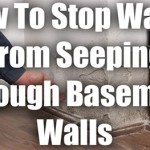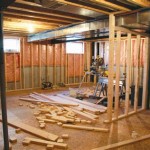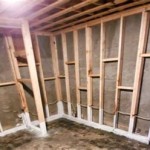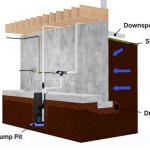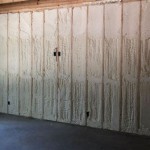The Best Way to Insulate Basement Floor Joists
A well-insulated basement floor can significantly improve the comfort and energy efficiency of your home. By insulating the floor joists, you can prevent heat loss in the winter and keep your basement cool in the summer. This article discusses the best ways to insulate basement floor joists, considering factors like your budget, access to the joist space, and desired level of insulation.
Understanding Basement Floor Joist Insulation
Basement floor joists are the horizontal beams that support the floor above. Insulation is installed between these joists, creating an air barrier that helps to regulate temperature. This insulation prevents heat from escaping your living space in the winter and reduces heat gain from the ground in the summer. Additionally, it can help to reduce noise transmission from the floor above.
There are several types of insulation commonly used for basement floor joists, each with its pros and cons:
- Fiberglass batts: Fiberglass batts are a popular choice for basement insulation due to their affordability and ease of installation. They are available in various thicknesses and R-values, making them suitable for different climates and needs.
- Spray foam insulation: Spray foam insulation is a highly effective option, offering excellent thermal resistance and air sealing properties. It expands to fill gaps and crevices, creating a continuous barrier against heat transfer. However, it can be more expensive than other insulation options.
- Loose-fill cellulose insulation: Loose-fill cellulose insulation is made from recycled paper and is blown into the joist cavities. It offers good thermal performance and is environmentally friendly. However, it requires special equipment for installation.
- Rigid foam insulation: Rigid foam insulation boards are a good choice for situations where you need high R-value and water resistance. They are often used in conjunction with other insulation types, such as fiberglass batts.
Choosing the Right Insulation Method
The best way to insulate basement floor joists depends on several factors, including:
- Access to the joist space: If you have easy access to the joist cavities from above or below, installing fiberglass batts or loose-fill cellulose insulation is straightforward. If access is limited, spray foam insulation might be a better option.
- Budget: Fiberglass batts are generally the most affordable insulation option. Spray foam insulation and rigid foam insulation are more expensive but offer higher performance.
- Climate: The climate in your region will influence the R-value of the insulation you need. In colder climates, you will need higher R-values for adequate thermal resistance.
- Moisture concerns: If your basement experiences moisture problems, consider using insulation with good water resistance, such as rigid foam insulation or spray foam insulation.
Installing Basement Floor Joist Insulation
Once you have chosen the best insulation method for your needs, you can start the installation process. Here are general steps for installing insulation:
- Prepare the joist space: Clear any debris or obstructions from the joist cavities. Ensure that the joist space is dry and free of moisture.
- Install vapor barrier: If necessary, install a vapor barrier to prevent moisture from migrating into the insulation. This is especially important in humid climates or if your basement is prone to moisture problems.
- Install insulation: Install the chosen insulation material according to the manufacturer's instructions. Ensure that the insulation is snugly fitted between the joists and fills the cavity completely.
- Seal gaps and cracks: Use foam sealant or caulk to seal any gaps or cracks around the insulation and at the edges of the joist space.
- Finish the floor: Finish the floor above with your chosen flooring material, such as carpet, wood, or tile.
It's important to note that installing insulation in basement floor joists can sometimes involve removing existing flooring. It is advisable to consult with a qualified contractor or building professional to determine the appropriate approach for your specific situation.

Insulating Rim Joists Fine Homebuilding

Basement Rim Joist Insulation For Cold Floors Ecotelligent Homes

Insulating Rim Joists Fine Homebuilding

Sealing And Insulating Rim Joists Insofast Continuous Insulation Panels

Preparing For Foundation Or Floor Insulation

Insulating Basement Walls With Embedded Joists Greenbuildingadvisor

Do I Need To Insulate My Rim Joist Home Solutions Of Iowa

Floor Above Unconditioned Basement Or Vented Crawlspace Building America Solution Center

How To Insulate Your Rim Joists And Stud Wall Cavities Dap Global

The Best Way To Insulate A Floor Greenbuildingadvisor
Related Posts
